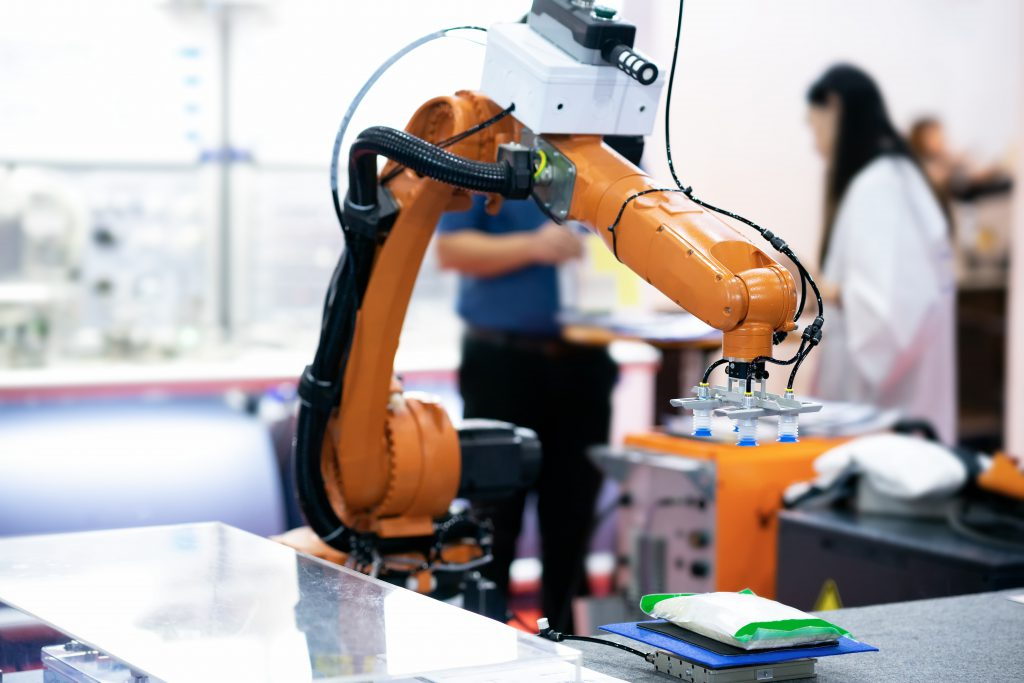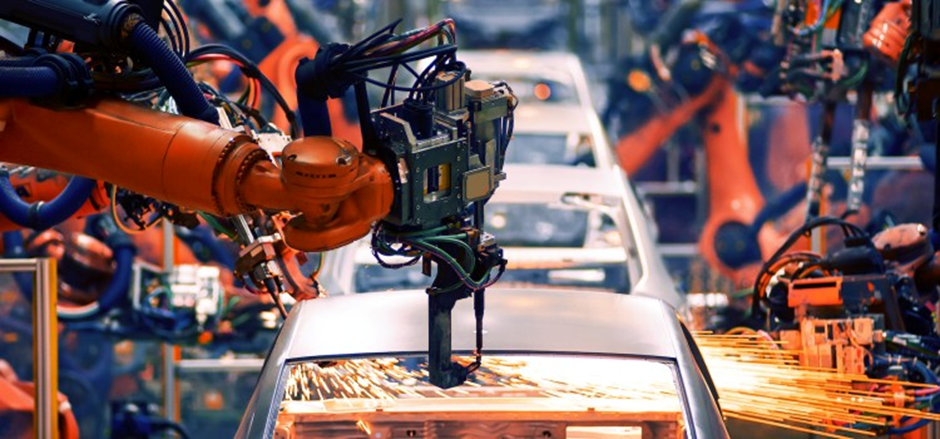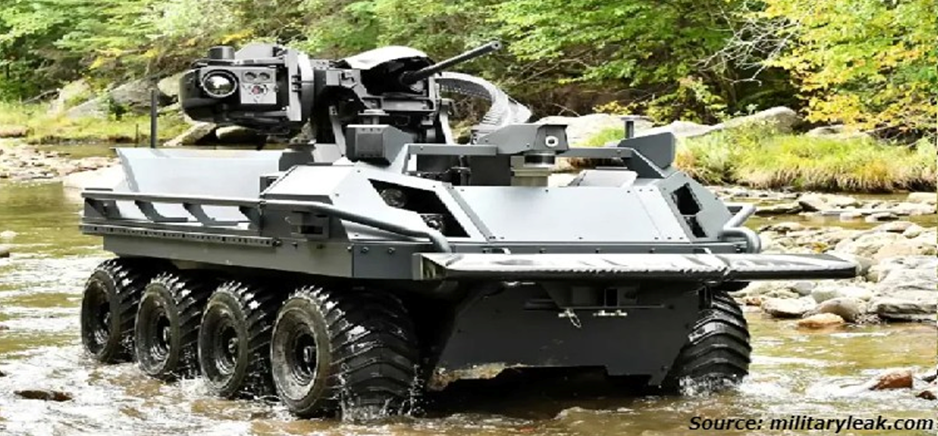The Impact of Robotic Grippers on The Manufacturing Industry
09-Dec-2024

Introduction
A robotic griper also known as an end effector, is a device that attaches to the end of a robotic arm and is used to hold, manipulate, and move objects within a manufacturing or industrial process. It is responsible for the grasping, handling, and manipulating objects inside an automated process.
Robotic grippers have a number of advantages, including increased efficiency, precision, and safety. They can also be programmed to perform a wide range of tasks, making them highly versatile. Additionally, they can be used to automate tasks that would be dangerous for humans to perform, such as handling hazardous materials or working in high-radiation environments.
Robotic grippers are used in a wide range of industries, including automotive, aerospace, medical, and food and beverage. In the automotive industry, for instance, robotic grippers are used to handle and assemble car parts in manufacturing plants. In the aerospace industry, they are used to handle and assemble aircraft components. In the medical industry, they are used to handle and assemble medical devices and surgical instruments.
Exploring Various Types of Robotic Grippers
There are different types of robotic grippers that have been developed for a variety of applications. Some common types include:
Pneumatic grippers: These grippers use compressed air to open and close their jaws, making them ideal for handling delicate or lightweight objects. They are also relatively low-cost and easy to maintain, making them a popular choice for small and medium-sized businesses.
Electric grippers: These grippers use electric motors to open and close their jaws, making them ideal for high-speed and high-precision applications. They are also able to handle heavy loads and have a wide range of gripping force, making them suitable for heavy-duty applications.
Vacuum grippers: These grippers use suction to hold an object in place, making them ideal for handling flat or irregularly shaped objects. They are also relatively low-cost and easy to maintain, and can be used in conjunction with other gripper types for added versatility.
Hydro-mechanical grippers: These grippers use a combination of fluid pressure and mechanical motion to open and close their jaws. They are ideal for heavy-duty applications and can handle large and heavy objects. They can also grip objects with irregular shapes and high surface roughness.
Magnetic grippers: These grippers use magnets to hold an object in place, making them ideal for handling ferromagnetic materials. They are commonly used in industries such as manufacturing and assembly with the ability to handle delicate and fragile parts without damaging them.
Servo-Electric Grippers: These grippers use electric servo motors to move and control the gripper fingers. These grippers are known for their precision and speed in gripping and releasing objects, as well as their ability to provide precise control over the gripping force. Servo electric grippers are commonly used in applications such as assembly lines, material handling, and packaging. They are also used in industries such as automotive, electronics, and food and beverage.
Impact of Advanced Technologies on Robotic Grippers
Internet of Things (IoT), data science, machine learning, and artificial intelligence are important technologies that have significantly impacted the development of robotic grippers to improve their functionality and performance in several ways:
IoT enables the robotic gripper to be connected to a network, which allows it to collect and share data with other devices and systems. This data can be used to optimize the gripper's performance and improve its ability to handle different types of objects.
Data science and machine learning can be used to analyze the data collected by the gripper, identify patterns, and make predictions about the behavior of the objects it is handling. This can be used to improve the gripper's grasping and manipulation capabilities.
Machine learning algorithms can also be used to train the gripper to recognize objects, classify them and make decisions based on that.
Artificial intelligence (AI) can be used to control the gripper, allowing it to adapt to different environments and situations. AI-based control systems can also be used to implement advanced grasping strategies, such as the ability to grasp objects of different shapes and sizes.
Furthermore, with the help of AI, robotic grippers can also learn from their experience and adjust to new scenarios, and even troubleshoot problems on their own.
The combination of these technologies can help to make robotic grippers more versatile, efficient, and capable of handling a wide range of objects and situations.
Current Scenarios of Robotic Grippers in Big Economies
United States is one of the leaders in the development and manufacturing of robotic grippers. There are many companies and research institutions in the U.S. that specialize in the design and production of grippers for a wide range of applications including manufacturing, logistics & warehouse, food & agriculture, healthcare, and others.
Some notable companies in the U.S. that produce robotic grippers include Destaco, PHD Inc.,Soft Robotics, and others. These companies offer a wide variety of gripper technologies, including pneumatic, electric, and vacuum grippers, as well as multi-finger and compliant grippers.
Robotic grippers in the U.S. are highly utilized in logistics and e-commerce industries as robots have become an integral part of these industries to cope with the rising demand for timely deliveries. Robots equipped with grippers improve the employee experience by eliminating repetitive tasks, such as lifting, stacking, or turning products, which are automated using robots. Automating sorting processes in these industries has eliminated issues, such as staff shortage, as current robotic facilities can handle higher volumes even with fewer people.
In addition, the United States is home to many global e-commerce leaders, such as Amazon, eBay, Walmart, and Best-buy that are adopting robotic grippers in the country. As a result, these grippers are in great demand across numerous production facilities. Despite these companies, there are also many universities and research institutions in the U.S. that are actively working on the development of new gripper technologies. For instance, researchers at the North Carolina State Universitydemonstrated a new type of highly precise and flexible robotic grippers that can lift human hair. This new robotic gripper will have applications for both soft robotics and biomedical technologies.
China has made significant advances in the field of robotic grippers in recent years. Chinese companies and research institutions have developed a wide range of robotic gripper technologies, including both traditional mechanical grippers and newer, flexible soft grippers.
Some of the Chinese companies that specialize in producing robotic grippers include Siasun Robot & Automation Co. Ltd,Han's Robot, Estun Automation, and others. These are some of the major Chinese companies that specialize in producing robotic grippers, They have a wide range of products and solutions for different industries.
In China, robotic grippers are widely used in the food and beverage sector, manufacturing, logistics and warehouse, and other industries. Advances in automation and robotics enable Chinese food and beverage producers to enhance efficiency while fulfilling rising customer demand.
China's research institutions are also actively involved in developing robotic gripper technology. For example, the Chinese Academy of Sciences has several research groups working on soft robotics, which includes the development of soft robotic grippers. These universities are focusing on the development of advanced grippers that can be used in various applications such as grasping delicate objects, manipulation, and grasping irregularly shaped objects.
Competitive Landscape
There are numerous companies that are engaged in the manufacturing of robotic grippers. Some of the leading players are fortifying their positions through a range of strategies, including the introduction of new products, partnerships, collaboration, acquisitions, and others.
Next Move Strategy Consulting recognizes at least 5 biggest players in the market including SCHUNK GmbH & Co. KG, Festo, Kuka AG, Piab AB, and Destaco.
About the Author
 Shyam Gupta is a passionate and highly enthusiastic researcher with more than four years of experience. He assists clients in overcoming difficult business challenges by providing actionable insights through exhaustive research. He has been closely monitoring a number of industries, such as Consumer Electronics, Robotics, and Electric Vehicles. He has a keen interest in writing articles and uses blogs as a medium to share his thoughts. He spends his time reading and painting, when not keeping up with industry news. The author can be reached at info@nextmsc.com
Shyam Gupta is a passionate and highly enthusiastic researcher with more than four years of experience. He assists clients in overcoming difficult business challenges by providing actionable insights through exhaustive research. He has been closely monitoring a number of industries, such as Consumer Electronics, Robotics, and Electric Vehicles. He has a keen interest in writing articles and uses blogs as a medium to share his thoughts. He spends his time reading and painting, when not keeping up with industry news. The author can be reached at info@nextmsc.com
Add Comment
Related Blogs
Major Industry Leaders and Their Impact on the Automotive Robotics Market
Automotive robotics market expected to experience rapid grow...
Tech Titans Transforming AI Robots: IBM, Intel, and Microsoft's Influence
According to Next Move Strategy Consulting, the AI Robots Ma...
UGVS and the Power Players: Genetal Dynamics, Qinetiq, and Boston Dynamics
According to Next Move Strategy Consulting, the UGV Mar...











